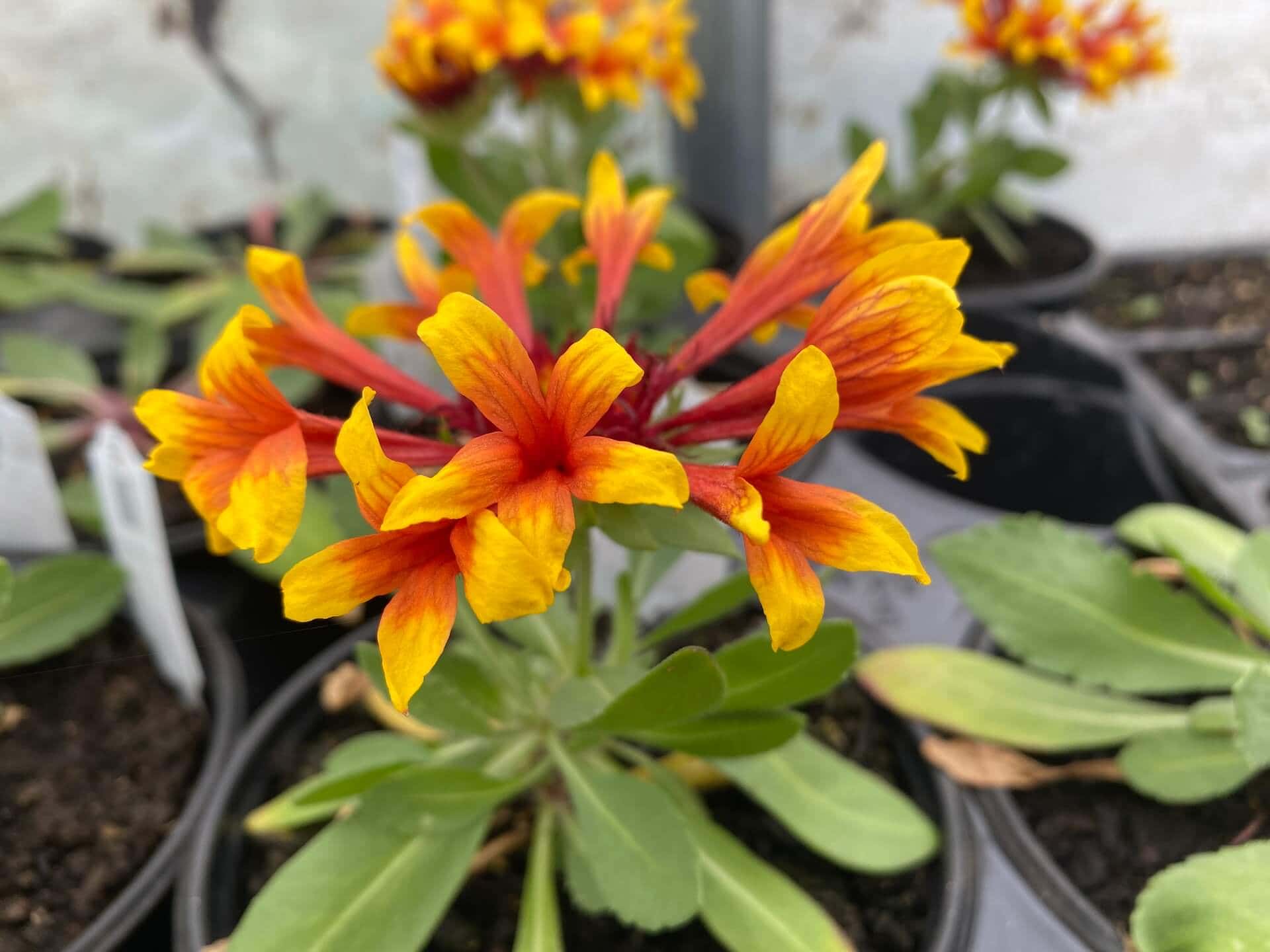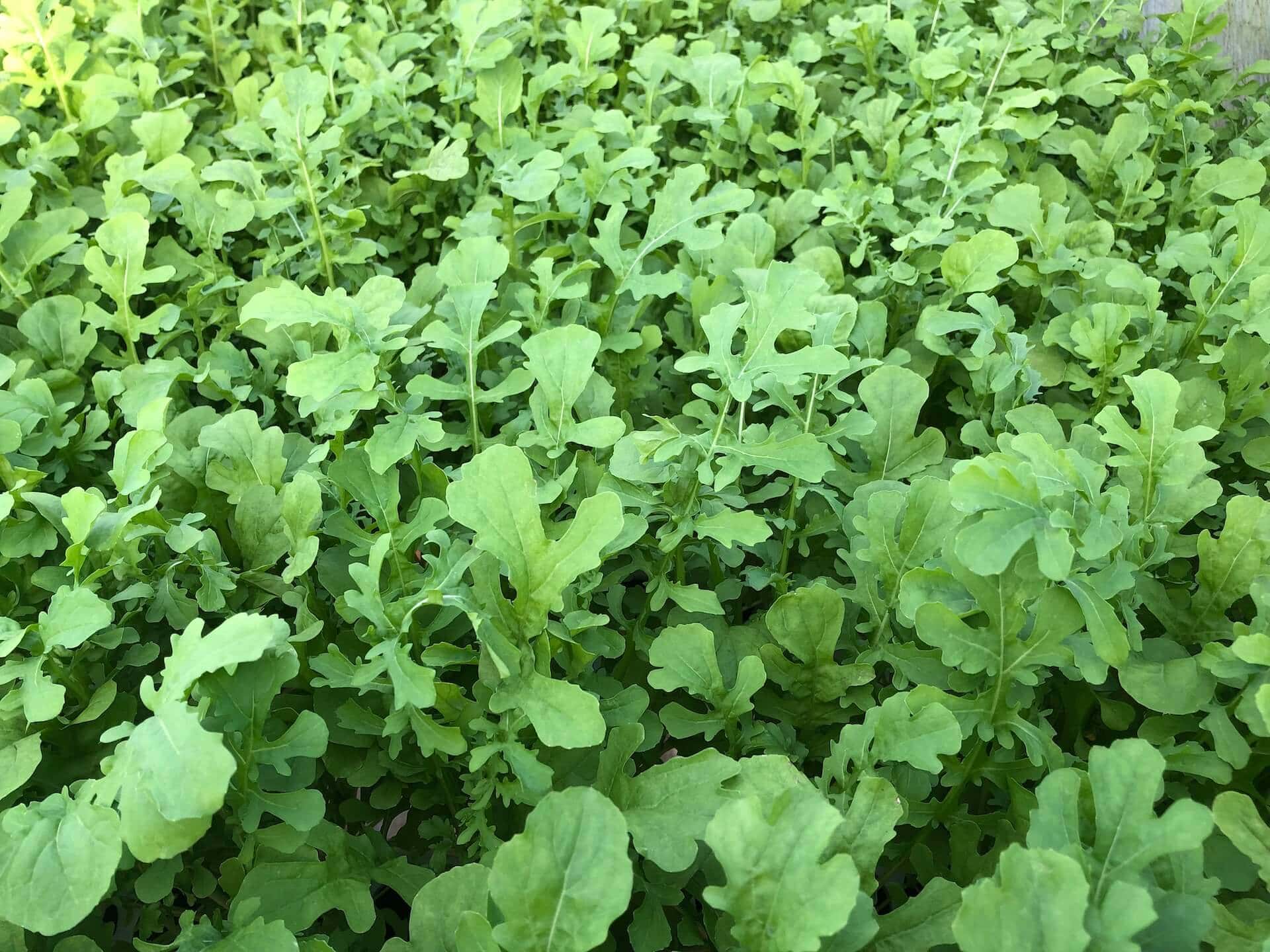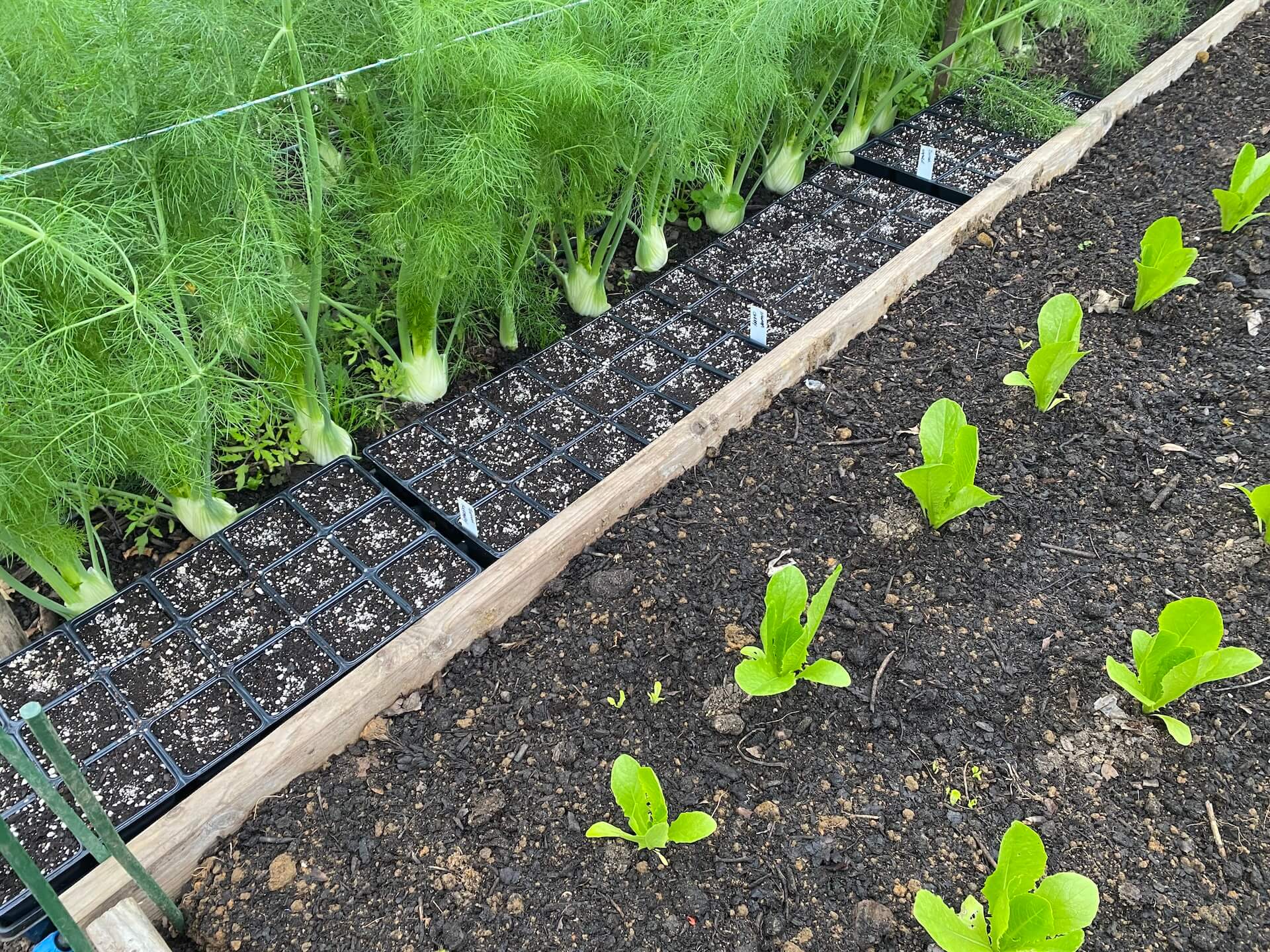This post may contain affiliate links. Probably doesn’t, but it might. It doesn’t cost you anything extra but if you use these links to buy something, we may earn a commission.
Table of Contents
A Guide for Home Gardeners

Are you a home gardener looking to grow delicious tomatoes but find yourself confused by the terms “determinate” and “indeterminate”? Don’t worry, you’re not alone. Many gardening enthusiasts struggle to understand the differences between these two tomato types and how they can impact their gardening experience.
That’s why we’ve created this comprehensive guide to unravel the mystery of determinate and indeterminate tomatoes. In this article, we’ll walk you through the characteristics of each type, their growth habits, and their pros and cons. By the end, you’ll have a clear understanding of which tomato variety is best suited for your garden and how to maximize their potential.
So, whether you’re a seasoned gardener or just starting out, get ready to dive into the world of determinate and indeterminate tomatoes and take your homegrown tomato game to the next level.
Characteristics of Determinate Tomatoes
Determinate tomatoes, also known as bush tomatoes, have a compact growth habit and tend to reach a predetermined height, usually around 3 to 4 feet. Unlike indeterminate tomatoes, determinate varieties stop growing once they reach a certain size. This makes them ideal for gardeners with limited space, as they can be easily grown in containers or small raised beds. Determinate tomatoes also tend to have a concentrated fruit set, meaning they produce a large number of tomatoes all at once, making them perfect for canning or preserving.
One of the key characteristics of determinate tomatoes is their shorter growing season. These tomatoes typically ripen within a specific timeframe, usually around 4-6 weeks. This can be advantageous for gardeners who want a quick harvest or live in regions with shorter growing seasons. Additionally, determinate tomatoes are known for their sturdy stems and branches, which require less support compared to their indeterminate counterparts. This makes them easier to manage and less prone to breaking under the weight of the fruit.
However, it’s important to note that determinate tomatoes have limited potential for growth and continuous fruit production. Once the tomatoes have ripened, the plant’s life cycle comes to an end, and it will eventually die off. This means that if you’re looking for tomatoes throughout the entire growing season, determinate varieties might not be the best choice. Additionally, because determinate tomatoes produce a large number of fruits all at once, it can be challenging to keep up with the harvest and prevent any fruit from going to waste.
Advantages and Disadvantages of Growing Determinate Tomatoes
Determinate tomatoes offer several advantages that make them a popular choice among home gardeners. Firstly, their compact size makes them ideal for small gardens, balconies, or patio containers. They don’t require extensive staking or trellising, which saves both time and effort. Additionally, determinate tomatoes ripen quickly and give you a concentrated harvest, which is great for those who enjoy preserving or canning their tomatoes. The shorter growing season of determinate tomatoes also means that you can enjoy your homegrown tomatoes sooner.
However, there are some downsides to growing determinate tomatoes. Their limited growth potential means that you won’t have a continuous supply of tomatoes throughout the growing season. Once all the fruit has ripened, the plant will stop producing, and you’ll have to wait until the next growing season to enjoy fresh tomatoes again. Additionally, the concentrated fruit set of determinate tomatoes can sometimes result in a surplus of tomatoes that need to be harvested and preserved all at once. This can be overwhelming for some gardeners, especially if they don’t have the time or resources to process large quantities of tomatoes.
Despite these limitations, determinate tomatoes remain a popular choice for home gardeners who have space constraints or prefer a quick and concentrated harvest. With proper planning and preservation techniques, you can make the most out of your determinate tomato plants and enjoy a bountiful harvest year after year.
Characteristics of Indeterminate Tomatoes
Indeterminate tomatoes, also known as vining tomatoes, have a more sprawling growth habit and can reach heights of 6 feet or more. Unlike determinate tomatoes, indeterminate varieties continue to grow and produce fruit throughout the entire growing season until the first frost. This means that you can enjoy fresh tomatoes from your garden all summer long. Indeterminate tomatoes also have a more open and branching structure, which requires additional support such as stakes, cages, or trellises to prevent the plants from collapsing under their own weight.
One of the key characteristics of indeterminate tomatoes is their extended growing season. Unlike determinate varieties, indeterminate tomatoes can continue to produce fruit until the first frost hits. This makes them an excellent choice for gardeners who want a continuous supply of fresh tomatoes throughout the summer. Indeterminate tomatoes also have a longer period of fruit ripening, which allows for a more staggered harvest. This can be advantageous if you prefer a steady supply of tomatoes rather than a large harvest all at once.
However, the sprawling growth habit of indeterminate tomatoes requires more space compared to determinate varieties. They can take up a significant amount of garden real estate, making them less suitable for small gardens or containers. Additionally, indeterminate tomatoes often require more attention and maintenance, such as regular pruning and tying to keep the plants upright and prevent disease. The extended growing season of indeterminate tomatoes can also be a disadvantage in regions with shorter summers or cooler climates, as the plants may not have enough time to fully ripen their fruit.
Advantages and Disadvantages of Growing Indeterminate Tomatoes
Indeterminate tomatoes offer several advantages that make them a popular choice among home gardeners. Their extended growing season means you’ll have a continuous supply of fresh tomatoes throughout the summer. This is especially beneficial if you enjoy eating tomatoes fresh from the vine or want to make the most out of your garden space. Indeterminate tomatoes also tend to have a longer period of fruit ripening, allowing for a more staggered harvest. This can be advantageous if you prefer a steady supply of tomatoes rather than a large harvest all at once.
However, there are some downsides to growing indeterminate tomatoes. Their sprawling growth habit requires additional support, such as stakes, cages, or trellises, to prevent the plants from collapsing under their own weight. This can be time-consuming and require regular maintenance throughout the growing season. Additionally, indeterminate tomatoes may not be suitable for gardeners with limited space, as they can take up a significant amount of garden real estate. The extended growing season of indeterminate tomatoes can also be challenging in regions with shorter summers or cooler climates, as the plants may not have enough time to fully ripen their fruit before the first frost.
Despite these limitations, indeterminate tomatoes remain a popular choice for home gardeners who have enough space and want a continuous supply of fresh tomatoes throughout the summer. With proper support and maintenance, you can enjoy a bountiful harvest of indeterminate tomatoes and savor the taste of homegrown goodness.
Choosing the Right Tomato Variety for Your Garden
When it comes to choosing the right tomato variety for your garden, there are a few factors to consider. First and foremost, assess the available space in your garden. If you have limited space, determinate tomatoes might be the better choice as they have a more compact growth habit and can be easily grown in containers or small raised beds. On the other hand, if you have ample space and want a continuous supply of fresh tomatoes, indeterminate varieties might be the way to go.
Another important factor to consider is your climate and growing season. If you live in an area with shorter summers or cooler temperatures, determinate tomatoes may be more suitable as they tend to have a shorter growing season. However, if you have a longer growing season, indeterminate tomatoes can thrive and provide you with a plentiful harvest.
Lastly, think about your gardening goals and preferences. If you enjoy canning or preserving tomatoes, determinate varieties with their concentrated fruit set might be a better fit. If you prefer eating fresh tomatoes throughout the summer, indeterminate varieties with their extended growing season might be more appealing.
Ultimately, the right tomato variety for your garden will depend on your specific circumstances and preferences. Consider these factors carefully and choose the variety that aligns with your gardening goals and resources.
Planting and Caring for Determinate Tomatoes
Once you’ve chosen the right determinate tomato variety for your garden, it’s time to get planting. Here are some steps to follow to ensure your determinate tomatoes thrive:
- **Choose a sunny spot**: Tomatoes love sunshine, so select a location in your garden that receives at least 6 to 8 hours of direct sunlight daily.
- **Prepare the soil**: Amend your soil with organic matter such as compost or well-rotted manure to improve drainage and fertility.
- **Plant your tomatoes**: Dig a hole that is slightly larger than the root ball of your tomato plant. Gently remove the plant from its container and place it in the hole, ensuring the top of the root ball is level with the soil surface. Make sure the roots have plenty of room to spread out. If you remove the bottom set of leaves and plant the soil so that spot is beneath the soil, you give your tomato plant greater stability. Think of all the growth that happens and how heavy the tomato bush becomes; a good root system is essential for plant health.
- **Water thoroughly**: After planting, water your tomatoes deeply to settle the soil around the roots. It is better to water thoroughly a couple of times each week rather than a little bit every day. The water needs to reach the tips of the roots in the soil and the plants need to dry out in between watering.
- **Mulch**: Apply a layer of organic mulch, such as straw or wood chips, around the base of the plants to conserve moisture, suppress weeds, and regulate soil temperature. Leaf mulch is easy to apply and will break down into compost as it ages.
- **Fertilize**: Feed your determinate tomatoes with a balanced organic fertilizer once when you plant or use a good compost blended into the soil. Too much fertilizer will give you a lot of foliage and fewer tomatoes.
- **Support your plants**: Although determinate tomatoes are generally more compact, they can still benefit from support. Use stakes, cages, or trellises to keep the plants upright and prevent them from sprawling. Using supports keeps your plants off the ground and reduces pests, dirt, and critters eating the tomatoes.
- **Prune sparingly**: Unlike indeterminate tomatoes, determinate varieties don’t require extensive pruning. However, you can remove any suckers or lower leaves that touch the ground to improve air circulation and reduce the risk of disease. We don’t bother with pruning. If you space your tomatoes so that they have good air flow, it is not necessary.
- **Monitor for pests and diseases**: Regularly inspect your tomato plants for signs of pests or diseases. If necessary, take appropriate measures to control infestations or prevent the spread of diseases.
- **Harvest and enjoy**: Once your determinate tomatoes have ripened, harvest them by gently twisting or cutting the fruit from the vine. Enjoy them fresh or use them in your favorite recipes.
Pruning and Supporting Indeterminate Tomatoes
Indeterminate tomatoes require more attention and maintenance compared to determinate varieties. Here are some tips for pruning and supporting your indeterminate tomato plants:
- **Choose a sunny spot**: Just like determinate tomatoes, indeterminate varieties thrive in full sun, so select a location in your garden that receives at least 6 to 8 hours of direct sunlight daily. It is best if the plants can get sun from sun up to sun down, as you will have a larger harvest that way.
- **Prepare the soil**: Amend your soil with organic matter to improve its fertility and drainage. This will provide your tomato plants with the nutrients they need to grow and thrive. Compost is the best fertilizer you can use when you plant. Rarely will you need additional fertilizer throughout the season. Too much fertilizer results in a lot of leaves and few tomatoes.
- **Plant your tomatoes**: Dig a hole that is slightly larger than the root ball of your tomato plant. Gently remove the plant from its container and place it in the hole, ensuring the top of the root ball is level with the soil surface. If the plant is small, stick with just planting as deeply as the root ball. If the plant is more than 10” tall, then pinch off the bottom set of leaves and plant up to that spot on the stem. This helps your plant establish more roots in order to support all the top growth that will happen.
- **Water deeply**: After planting, water your tomatoes deeply to encourage the roots to establish and grow. Water consistently each week but the soil should not be waterlogged. Good drainage is important.
- **Mulch**: Apply a layer of organic mulch, such as straw or wood chips, around the base of the plants to conserve moisture, suppress weeds, and regulate soil temperature. We use leaf mulch, as we like the way it breaks down into compost for the soil over the course of a year.
- **Support your plants**: Indeterminate tomatoes have a sprawling growth habit and require additional support to prevent them from collapsing under their own weight. Use stakes, cages, or trellises to keep the plants upright and help them grow vertically. You want to keep the tomatoes off the ground, as this helps reduce damage, pests, and critters eating your tomatoes.
- **Prune regularly**: Indeterminate tomatoes benefit from regular pruning to remove suckers and promote better air circulation. Suckers are the small shoots that grow between the main stem and the branches. Pinch them off with your fingers or use clean pruning shears to remove them. I’m letting you know that we do not bother pruning our indeterminate tomatoes (or the determinates) as we always run out of time. If you want to prune, go for it. If not, don’t worry. It actually does not change the production of the plants.
- **Tie up your plants**: As your indeterminate tomatoes grow, use soft plant ties or twine to gently secure the branches to the support structure. This will prevent them from sprawling and make it easier for air to circulate, reducing the risk of disease. As the branches gain weight from the tomatoes, they need support to stay off the ground.
- **Monitor for pests and diseases**: Regularly inspect your tomato plants for signs of pests or diseases. If necessary, take appropriate measures to control infestations or prevent the spread of diseases. Good air flow helps keep your plants healthy, so planting them far enough apart to give them space is important.
- **Harvest and enjoy**: Indeterminate tomatoes will continue to produce fruit until the first frost hits. Harvest them as they ripen by gently twisting or cutting the fruit from the vine. Enjoy them fresh or use them in your favorite recipes.
Common Challenges and Troubleshooting Tips for Both Types of Tomatoes
Both determinate and indeterminate tomatoes can face common challenges and encounter pests and diseases. Here are some troubleshooting tips to help you overcome these issues:
- **Blossom end rot**: Blossom end rot is a common issue that affects both determinate and indeterminate tomatoes. It appears as a dark, sunken spot at the bottom of the fruit. To prevent blossom end rot, ensure your plants receive consistent watering and avoid over-fertilizing with nitrogen.
- **Fungal diseases**: Tomatoes are susceptible to various fungal diseases, such as early blight and powdery mildew. To prevent these diseases, provide adequate spacing between plants to allow for air circulation, avoid overhead watering, and remove any infected leaves or fruit.
- **Pests**: Common tomato pests include aphids, tomato hornworms, and whiteflies. Monitor your plants regularly and take appropriate measures to control pest infestations, such as using organic insecticides or handpicking the pests.
- **Nutrient deficiencies**: Tomatoes require a balanced supply of nutrients to grow and produce fruit. Common nutrient deficiencies include nitrogen, phosphorus, and potassium. Test your soil regularly and amend it with organic fertilizers or amendments as needed. You need to plant your tomatoes in a different area each year and to plant a different crop where you had the tomatoes. This gives you better nutrients in the soil and helps prevent carrying diseases in the soil from one year to the next.
- **Overwatering**: This is the number one mistake that you can make with tomatoes. Let the plants dry out between waterings.
Conclusion
Remember that “determinate” and “indeterminate” are categories of tomatoes and not varieties. Some popular determinate varieties are Early Girl, Celebrity, Roma, San Marzano, and Summer Pick. Some reliable indeterminate varieties are Sweet 100 cherry tomatoes, as well as nearly all cherry and grape tomatoes, Beefsteak, Brandywine, Striped German, and Chef’s Choice.
Determinate and indeterminate tomatoes both have appealing characteristics. Think of a determinate variety as giving you the whole season’s worth of tomatoes in a short period of time. This is great if you are planning to can or freeze tomatoes, or if you want extras to sell. Consider that indeterminate tomatoes will continue to grow and produce for an extended period of times. This is beneficial if you want your tomato season to last as long as possible.
Look at the various qualities and see which characteristics best suit your garden. Growing your own tomatoes is a satisfying endeavor, especially when you get to taste how good the results are.
Happy growing!
~ Ruth





